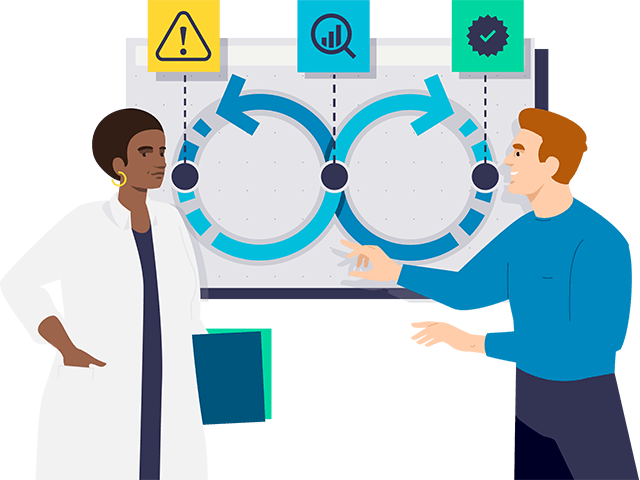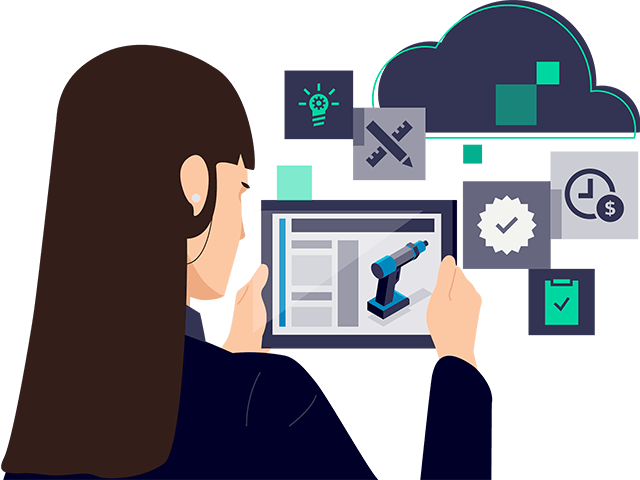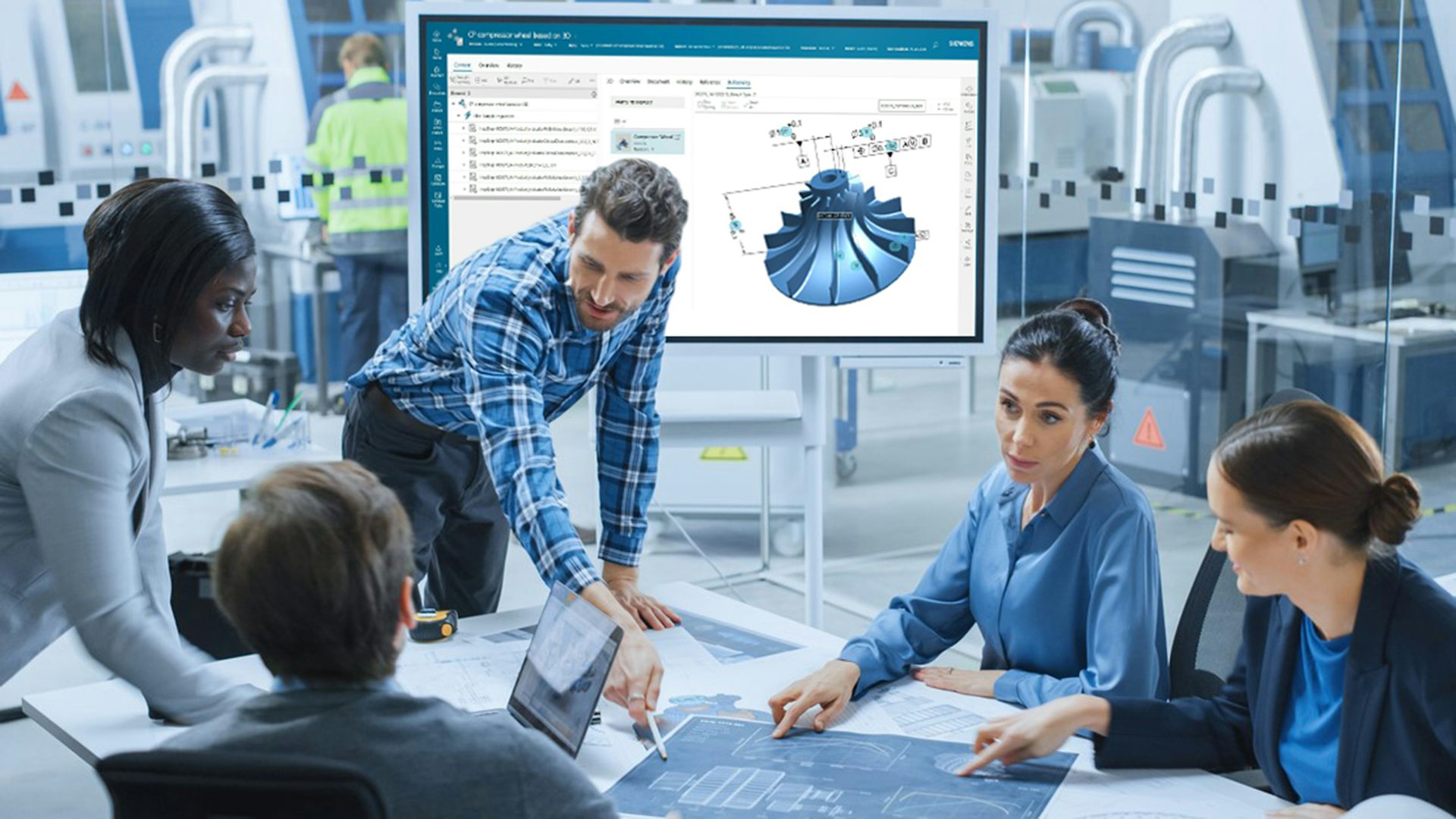Comment la gestion de la qualité vous permet d'optimiser vos activités
Intégrer des processus de qualité et de conformité tout au long du cycle de vie du produit permet de tirer parti de la complexité et de réduire les risques pour l'entreprise.
Utilisez les meilleures pratiques de planification de la qualité
Intégrer la planification de la qualité dans la phase de conception est essentiel pour gagner en compétitivité. Les données d'ingénierie fournissent les informations dont vous avez besoin pour gérer des projets complexes et vous aider à réduire les risques. L’utilisation de la CAO et des PMI vous aide à créer des plans de contrôle pour inspecter les éléments critiques pendant la production. L’IA améliore l’efficacité de l’ingénierie et de la planification de qualité.

Atteindre la qualité recherchée au niveau de l'approvisionnement et de la production
Livrez des produits de qualité en alignant les processus d'approvisionnement et de production. Assurez le suivi des fournisseurs de matières premières et de composants afin de veiller au respect des contrats et de garantir la livraison de ressources de qualité. Optimisez le processus de production en appliquant les normes de qualité et les meilleures pratiques. Collectez les données de l'atelier afin d'obtenir l'historique des produits, de détecter tout problème de conformité et de promouvoir la qualité.

Améliorez la qualité de vos produits et processus en continu
Recevez les réclamations et les non-conformités provenant de sources internes et externes. Rationalisez le processus d'optimisation continue en analysant et en résolvant les problèmes de qualité à l'aide d'un système de résolution des problèmes centralisé. Réduisez les délais de réponse et les coûts liés à la qualité en reliant directement vos processus de qualité et de gestion des modifications.

Rationaliser les normes de qualité
Mettez en œuvre un système structuré intégré aux processus de gestion de la qualité et accessible à tous les utilisateurs afin d’améliorer les audits externes et internes. Répondez aux défis réglementaires les plus exigeants grâce à des procédures de qualité automatisées et à un système PLM natif. Réduisez les risques de non-conformité afin d'assurer la satisfaction des clients et de protéger votre image.

Optimiser la qualité tout au long du cycle de vie du produit
Rassemblez votre système de gestion de la qualité (QMS) et votre processus de gestion du cycle de vie des produits (PLM) pour créer une solution complète de qualité avec Teamcenter. Siemens étend la gestion de la qualité aux domaines de l’ingénierie et de la fabrication. En s'appuyant sur d'autres éléments du portefeuille de Siemens, Teamcenter Quality offre une approche en boucle fermée, de la conception à la fabrication, en passant par l'atelier, et inversement.

Gérer les processus qualité dans le cloud
Teamcenter X Quality est notre solution cloud qui vous aide à optimiser vos activités en mettant en œuvre de meilleures pratiques de qualité préconfigurées et intégrées. Les mises à jour automatiques intègrent les dernières améliorations des processus de qualité dans différents secteurs. Notre interface intuitive facilite la gestion des processus de qualité et de conformité.

Quality management for medical devices trial
No installation is required. Start designing in minutes.
